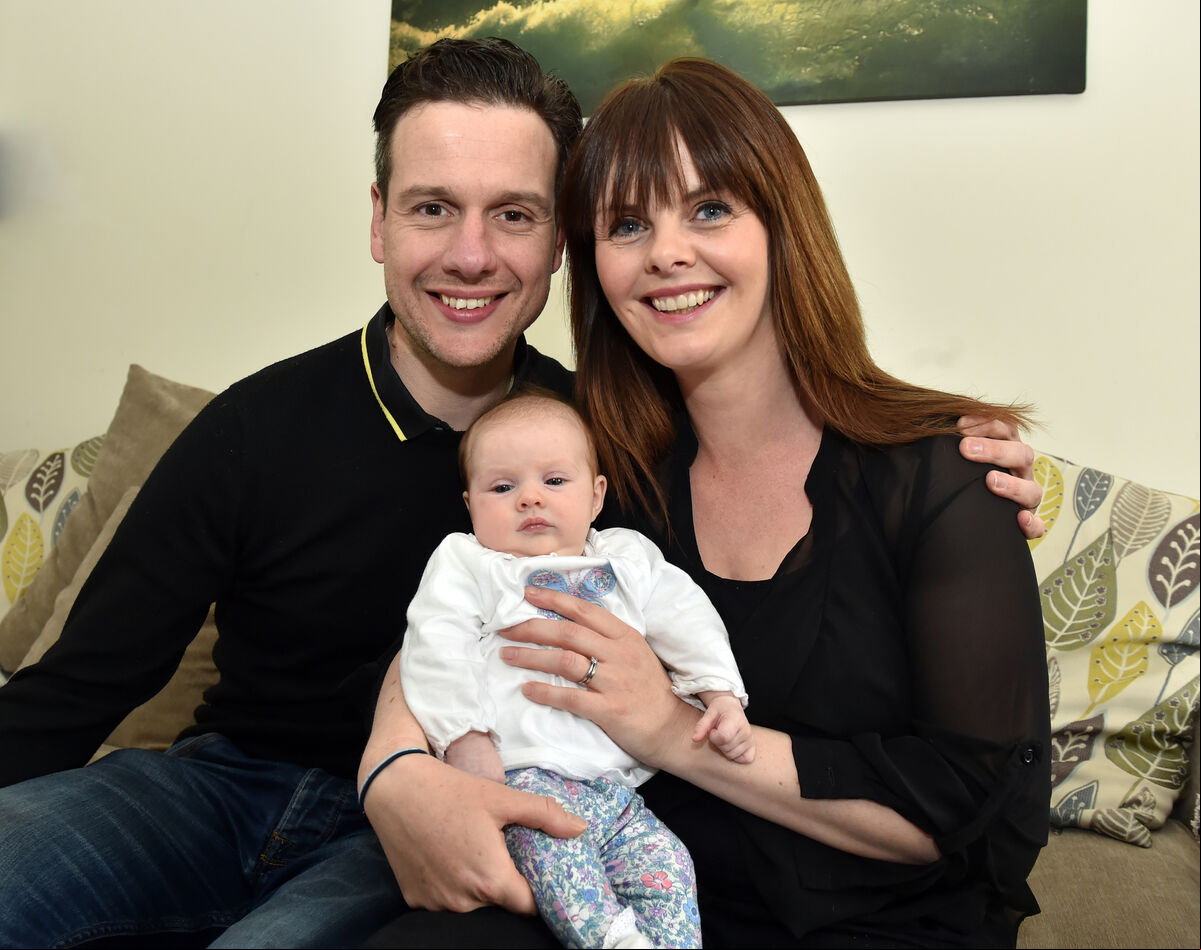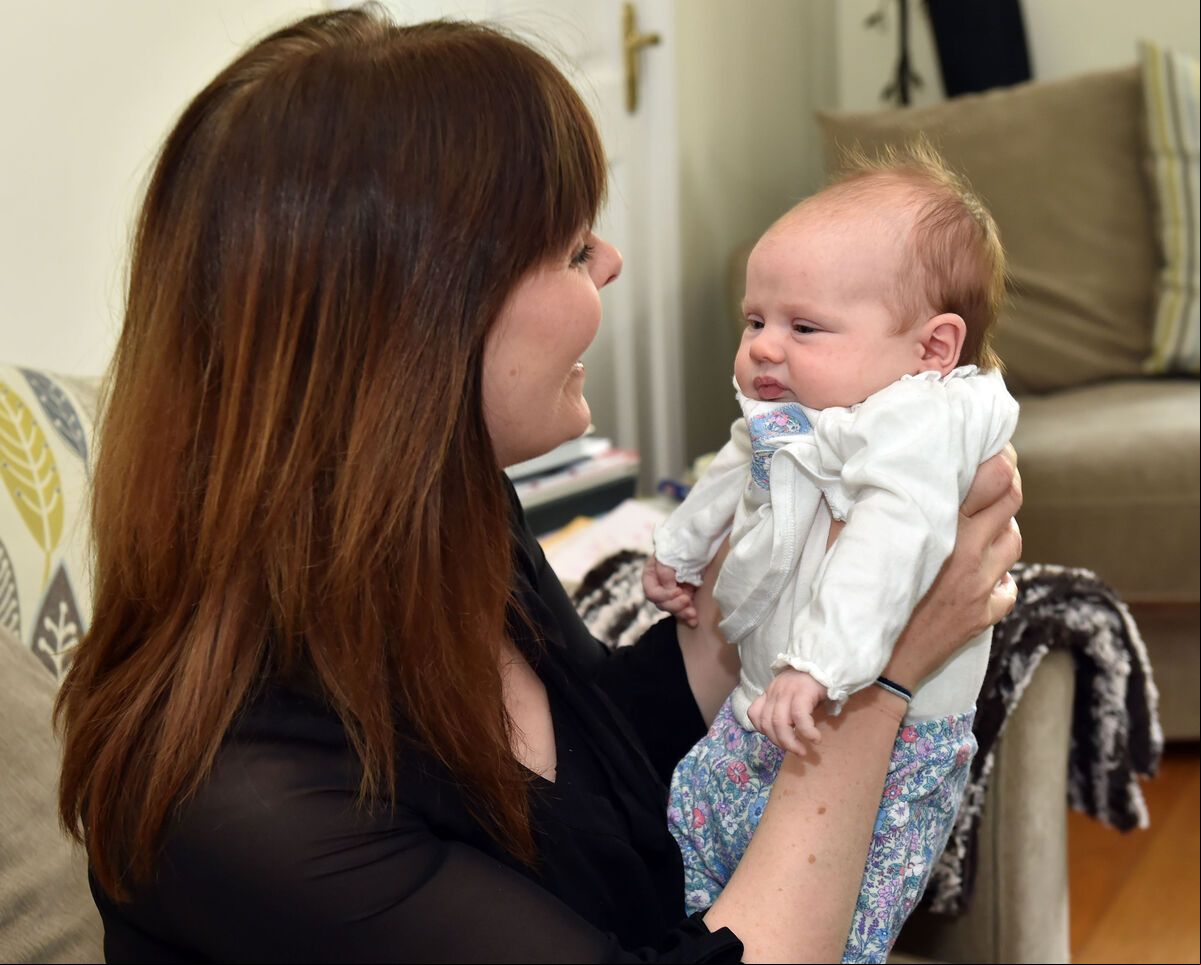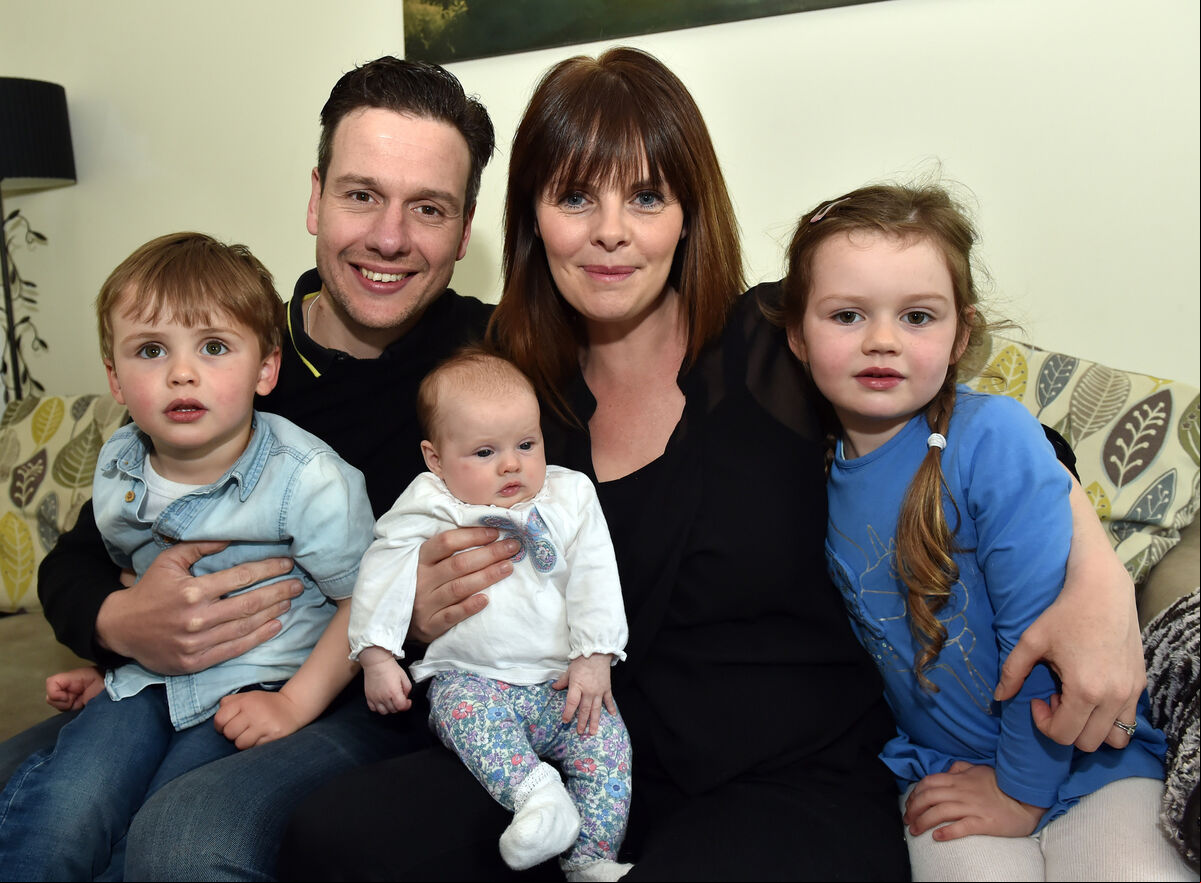'I would love to see more women avail of the home birth service'

IT was worry about not making it to the hospital that prompted the Paget family in Kinsale to first consider home birth options.
But now that they have experienced it, with the birth of third child Joni, they see the security of being at home as just one of a long list of benefits.
From the continuity of care to the lack of disruption for their other children, for the Pagets there really was no place like home.

This was to be their third labour and their first two had been fast — really fast!
“I was very anxious about baby number three taking a very short time to come because our second was born 20 minutes after we arrived at the hospital,” mother Alana says.
“Our first was pretty fast as well. I thought baby number three could potentially be quicker and I had a fear of him or her being born in the car or at home.”
The experience of Storm Emma in 2018 added to their nerves.
“[The baby was due] the same time of year, and we were snowed in here for five days,” dad Steve explains. “That was in the back of our minds.”

Friends who had experience of home births suggested they look into it as an option, to set their minds at ease. After meeting midwife Mary Cronin, who lives just a few miles away, they decided this was the route for them.
The home birth service is provided free by the HSE and there are five midwives providing the service in the Cork and Kerry region.
Mary, who has been working in this area since the 1990s, is ionate about the service they provide and letting women know how safe and well taken care of they will be throughout their pregnancy, labour and in the weeks following birth.
She said families, particularly fathers, are often nervous at the start but are reassured after sitting down with a midwife.
“He’s nervous but she knows she really wants it, that can be quite common,” Mary says.
“Our first consultation can be quite long. We go through all the protocols and how there is a plan for every situation and really, once the father hears that, they get it.
“Mary does this walk-through, like a step by step dress rehearsal and it was just great,” Steve says.
“Information, that’s all you are looking for, and the more you know what to expect, it takes the fear out.
“As a dad, it is quite limited what you can do but you still want to know what to do. Mary was great at saying ‘this is your role’ which is great, because you don’t want to be standing around twiddling your thumbs.
“I felt involved all three times but definitely with Mary, it gave great confidence.”
At around the 36-week mark, Mary does a home visit to establish where the birth will happen, that everything needed is in place and that she knows the route and journey time to the home.
So was Alana more nervous as she waited for labour to start?
“My anxiety was before I decided on a home birth, because of the fear of not making it to the hospital,” she says. “But once I had decided to go down this road I wasn’t nervous at all.”

Her concerns about a quick delivery proved correct.
“We had friends over for dinner on a Friday night, our kids were playing with theirs and they left the house at about a quarter to ten,” she says.
“Just as they were at the door, I thought something might be happening.”
Steve said: “I had no inkling and she just closed the door and said get the kids to bed, I think I’m going into labour!
“I rang Mary at 10pm and said ‘Look, it could be false, I’ve had a few contractions,” Alana says, “Seven minutes later I texted her and said ‘This is happening’. They came on so quickly and every contraction was stronger than the last. She was born at 11.45pm.”
Alana and Steve praised the hospital care they received while having daughter Cara and son Shay. But Joni being born at home was ideal.
“In the hospital you are in a ward with other people and with babies next to you, possibly crying,” Alana says.
“I haven’t a bad thing to say about the hospital but I knew after Shay I just wanted to get home as soon as he was born, but I had to stay overnight. I was just exhausted and wanted to get home. Whereas this time I was in my own bed within an hour and it was wonderful.”

The couple had arranged for friends living nearby to mind Cara and Shay during the labour if needs be, they both knew their new little brother or sister might be born at home. But they slept through it all and woke up to Joni.
"They slept through the whole thing, through her crying during the night and everything and woke up at six in the morning,” Alana says.
“It was like Christmas for them, we have a video of them coming into the room and Cara saying ‘The baby’s here’.
“Shay’s face was a picture, his jaw dropped, he just couldn’t believe it.”
Mary believes the lack of disruption to the routine is a major plus for families where there are children at home, but for her the number one benefit is the continuity of care, right through until the baby is two weeks old.
This includes help with getting a breastfeeding routine established, something Alana also highlighted.
She breastfed both Cara and Shay but struggled with it and found having Mary’s experience and extra in the early days invaluable.
With three young children and a busy house, the Pagets have no plans for another pregnancy anytime soon. But they have recommended it to friends and say if they were going again they would absolutely have another home birth.
“I wish now I had done it with Shay,” Alana says. “ It made everything massively easier afterwards, I felt I recovered so much quicker at home.
“The advantage of being at home is you are in your own bed, it really was wonderful.”

For midwife Mary Cronin, from Kinsale, the important difference between standard hospital care and the service she provides is the strength of the individual relationship between her and her patient.
Long before labour is on the horizon, she has established a strong connection with the mother-to-be and the rest of the family, visiting them at home and talking them through exactly what to expect.
The mother and baby remain in her care until a fortnight or more after the birth, with daily visits in the early days and plenty of help with feeding and any other issues.
Like the Pagets, she has nothing but praise for the work being done in Irish maternity hospitals but believes more families could benefit from the service she and her colleagues provide.
“I would love to see more women avail of it for the continuity,” she says.
“I think it is so sad that continuity is limited. The women who get continuity in antenatal care are paying a lot for a private service but they won’t get that continuity in labour.”
There are strict criteria for a pregnant woman to be considered for a home birth, she must be low-risk, with no signs of problems and a normal previous obstetric history.
Mary is keen to stress the levels of medical assistance and that are available to the midwifery team and the patients in their care.
“We have our own consultant obstetrician, Dr Fergus McCarthy, who oversees the service and we have a home-birth clinic with him once a month in the CUMH,” she explains.
“They are seen by the consultant and from there their care is shared by the GP and myself. If there are any problems, we can go straight to the consultant, which is fantastic.”
The local ambulance service will be notified in advance of plans for a home birth and will be aware when labour has started.
In addition, the midwife liaises with the mother’s GP service and, afterwards, the public health nurse.
For the birth itself, two midwives will be present, with the second there to provide assistance and back-up to the primary midwife who has been caring for the mother throughout pregnancy.
“It has to be right for the family involved,” Mary says.
“It is not my job to convince families to go for it, it is to give them the information and let them go off and think about it.”
She finds many of her referrals come, as the Pagets did, through word of mouth.
“I would say the bush telegraph is alive and well,” she says.
“Sisters, neighbours and friends — women are bubbling to tell their story and it resonates with other women. They can’t believe there is such a service and they are interested.”
Although the essential service remain the same, some aspects have changed over the years.
“I set up my practice in 1994 so I am around a long time,” Mary laughs.
“I had a pager and had to go to the telephone box and find out what was the problem or was there a labour.
“I might have to go into a pub or someone’s house to make a call, but I never missed a birth, ever! I really didn’t want a mobile, I was quite happy with my pager but that is where it went.”
These days, some women find the service through Facebook or the service’s website, www.corkandkerryhomebirth.com.
“We have to evolve and these are young women, this is how they get their information,” Mary says.
But what hasn’t changed is the relationship between the midwife and the mother-to-be at such a crucial time.
“The family side is a beautiful part of it, that there is no interruption,” she explains.
“Because I have worked in hospitals and they are busy places. They do a brilliant job in the hospitals but it is a really tough job.
“I am just doing one at a time, one patient at a time and that is really nice.”







 App?
App?


